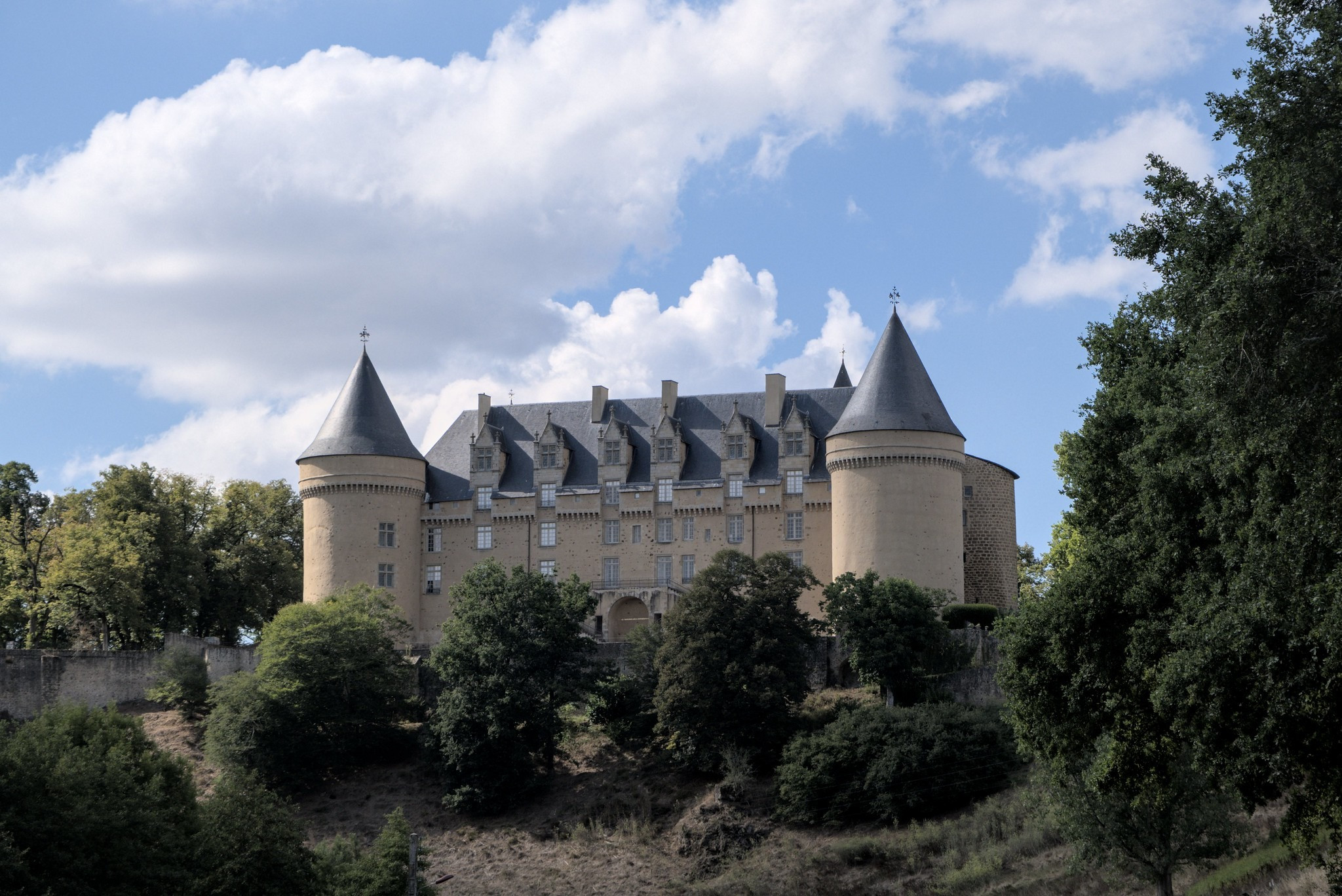1. Solignac Abbey
In the Briance valley, Solignac Abbey bears witness to the treasures of Romanesque art. This monument in the heart of the Limousin region dates back to the 630s, when King Dagobert authorized his adviser Saint Eloi, a native of Limoges, to undertake the construction of a church.
Solignac Abbey boasts exceptional architecture in the son-domed church style. The nave, with its three vaulted bays, features wide, flat buttresses and columns that rise to the roof. Inside, you'll discover stunning oak stalls, sculpted capitals and Romanesque paintings.
2. Rochechouart castle and its remarkable geological site
Perched on a rocky promontory in the Haute-Vienne region, it dominates the Graine valley. The geological site on which Château de Rochechouart stands is none other than the crater of a meteorite that fell over 200 million years ago.
The keep and drawbridge are remnants of theformer medieval fortress. The main building, the main courtyard and its arcaded gallery are more reminiscent of the Renaissance style. A journey through time that doesn't stop there, as the château houses the département's Museum of Contemporary Art.
3. The Oradour-sur-Glane memorial
A visit to this martyred village should be avoided by young children and sensitive people. Sadly known throughout the world, the village of Oradour-sur-Glane bears the scars of the massacre of its population by a unit of the Second SS Division on June 10, 1944.
Before entering the village ruins and following the trail of commemorative plaques, you can visit the nearby Centre de la Mémoire. This recently built site is dedicated to the message of remembrance and peace. It retraces the circumstances of these tragic events in connection with the Second World War.
4. Saint-Junien glove factory
While Limoges is renowned for its porcelain, other crafts stand out on the banks of the Vienne. In Saint-Junien, skins have been worked since the 11th century. The activity has evolved considerably since the first craftsmen settled here, and the village now boasts three glove factories, a leather goods factory and a megisserie.
The Cité du Cuir, located on a disused industrial site, also brings this economic sector to life. The site is steeped in heritage, and features a museographic trail, animation activities and educational workshops.
5. The mountains of Ambazac
When you landed atLimoges Bellegarde airport, you were able to look out of the window and see the sumptuous landscapes of nature reserves and parks. To the north-east of the town, the Monts d'Ambazac invite you to take in the sights. Along the way, you'll come across dolmens, menhirs and rocky chaotic formations on the "stones and legends" trail starting from Compreignac.
For an exceptional viewpoint at an altitude of 650 metres, climb up to the "pierre branlante" at Jonchère-Saint-Maurice. As for observing the local flora and fauna, there's no better place than the Tourbière des Dauges. The discovery trail criss-crosses the nature reserve, following the trough of a 3-million-year-old depression.
6. The collegiate church of Saint Léonard de Noblat
As you head towards the collegiate church, you'll be able to appreciate the architecture of the multi-storey houses, with their granite arches and turrets in the medieval streets of the town.
The Romanesque collegiate church of Saint-Léonard-de-Noblat is a Unesco World Heritage Site on the French Pilgrimage Route to Santiago de Compostela. Its exterior features include a porch bell tower, gable windows, rotunda and Limousin portal. Inside, you'll find a vaulted nave and a vast choir with an ambulatory. The 7 radiating chapels provide natural lighting.
7. Le Moulin du Got
In the 17th century, the Limousin was also renowned for its paper industry. The Moulin du Got, also in Saint-Léonard-de-Noblat, is one of the last remaining sites to bear witness to this know-how. It is run by an association belonging to the Luxe et Elégance en Limousin network. The team is not only responsible for the production of orders, but also for their transmission, through workshops based on the old paper-making trades.
The products are made by hand, but also on 19th century machines, in a blend of tradition and innovation, using vegetable or recycled paper. The site also boasts a charming boutique and regular exhibitions.
8. Lake Vassivière and the Plateau de Millevaches
Lac de Vassivière is the gateway to the Plateau de Millevaches. Created in 1950, the lake retains the waters of the Maulde, Vienne, Taurion and Dorat rivers. With its 45 km of shoreline, the lake is a delight forwater sports enthusiasts. Vassivière Island is home to the symbolic CIAP lighthouse. The Centre international d'art et du paysage (International Center for Art and Landscape) offerscontemporary art exhibitions for walkers.
The Plateau de Millevaches is a Regional Nature Park covering three départements. With its hills and valleys, purple moors, springs and peat bogs, the park boasts an outstanding plant and animal heritage.
9. Chassenon thermal baths
The village of Chassenon is a paradise for archaeology enthusiasts. The remains of the Cassinomagus thermal baths date back to the end of the 1st century. The site is set in a 15-hectare landscaped park.
The Chassenon archaeological park offers guided or costumed tours of the underground chambers, boilers and pools. Themed events are also organized to transport visitors back to Gallo-Roman times: escape game, Parcours des dieux maze...
Photo : https://www.flickr.com/photos/114781795@N07/52356729503

